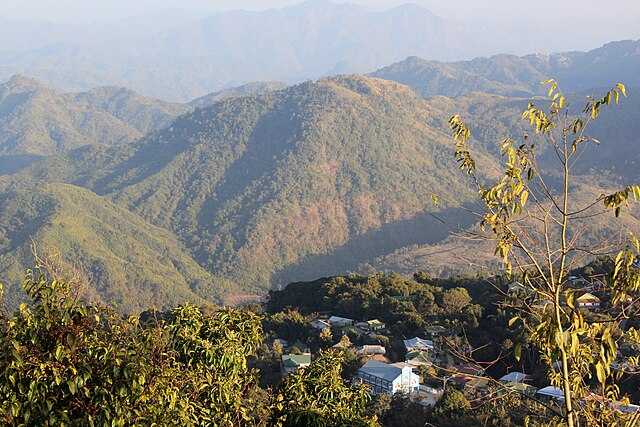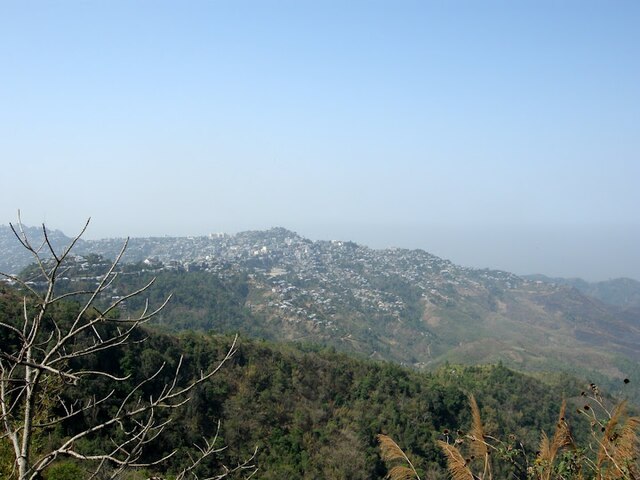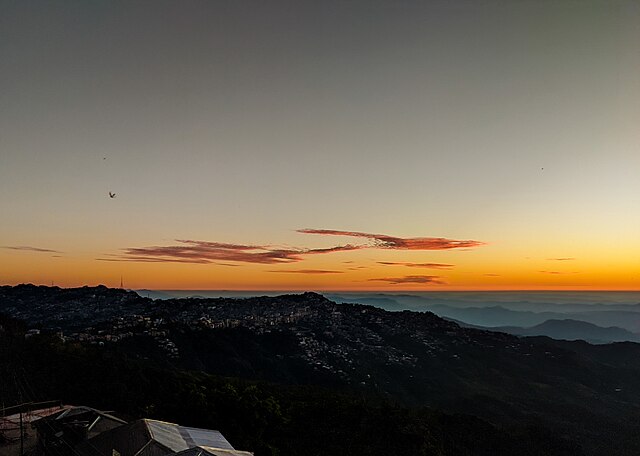What Makes Lunglei Special?
Have you ever wondered what it feels like to step into a place where time seems to slow down, and every corner tells a story? Welcome to Lunglei, the second-largest city in Mizoram and arguably one of Northeast India’s best-kept secrets. Nestled in the heart of this enchanting state, Lunglei isn’t just another dot on the map – it’s a living, breathing testament to the rich cultural tapestry of the Mizo people.
Geographic Location and Significance
Lunglei sits majestically at an altitude of approximately 722 meters above sea level, offering breathtaking panoramic views that’ll make your Instagram followers seriously jealous. Located about 165 kilometers south of Aizawl, the state capital, this charming city serves as the administrative headquarters of Lunglei district. But here’s what makes it truly special – it’s perched on a ridge, giving you the feeling of being on top of the world.
The city’s strategic location has made it a crucial hub for trade and commerce in southern Mizoram. Think of it as the gateway to Myanmar, with the international border just a stone’s throw away. This proximity has infused Lunglei with a unique blend of cultures that you won’t find anywhere else in India.
Cultural Heritage and Traditions
What sets Lunglei apart from other hill stations is its unwavering commitment to preserving Mizo culture. The city is like a living museum where ancient traditions coexist harmoniously with modern aspirations. The locals here don’t just practice their culture – they live it, breathe it, and share it with infectious enthusiasm.
The Mizo community in Lunglei has managed to maintain their linguistic heritage, with Mizo being the primary language of communication. Yet, don’t worry about language barriers – the warmth of the people transcends any linguistic divide, and you’ll find that their hospitality speaks a universal language.
History of Lunglei: From Ancient Times to Modern Era
Pre-Colonial Period

Long before the British set foot in this region, Lunglei was home to various Mizo tribes who lived in harmony with nature. The name ‘Lunglei’ itself is believed to derive from ‘Lung’ (meaning bridge) and ‘Lei’ (meaning stone), referring to a natural stone bridge that once existed in the area. Imagine ancient tribal communities crossing this natural wonder – it’s like something straight out of an adventure novel!
The early inhabitants were primarily agriculturalists who practiced jhum cultivation, a sustainable farming method that worked in perfect sync with the hilly terrain. These communities had their own governance systems, cultural practices, and social structures that have influenced modern Lunglei’s character.
British Colonial Influence
The British colonial period brought significant changes to Lunglei, but unlike many other regions in India, the transformation here was relatively gentle. The British established administrative offices and introduced formal education, but they also recognized and respected local customs and traditions.
During this period, Christianity began to take root in the region, not through force but through the dedicated work of missionaries who learned local languages and customs. This religious transformation didn’t erase the existing culture but rather created a beautiful synthesis that you can observe in Lunglei today.
Post-Independence Development
After India’s independence, Lunglei gradually transformed from a sleepy hill town into a significant urban center. The establishment of various government institutions, educational facilities, and infrastructure projects has shaped modern Lunglei while maintaining its essential character.
The city has embraced development without losing its soul – a balancing act that many urban centers struggle with. Today’s Lunglei represents the perfect marriage between progress and preservation.
Top Tourist Attractions in Lunglei
Khawnglung Wildlife Sanctuary
If you’re a nature enthusiast, Khawnglung Wildlife Sanctuary is your paradise found. Spread across 35 square kilometers, this sanctuary is home to diverse flora and fauna that’ll make any nature documentary seem pale in comparison. The sanctuary is particularly famous for its primate population, including the endangered Hoolock Gibbon.
Walking through the sanctuary feels like entering a different world altogether. The dense canopy overhead creates a natural cathedral, while the sounds of various birds and animals provide the perfect soundtrack for your adventure. It’s not just a sanctuary – it’s nature’s own amphitheater.
Zobawk Sports Academy
Sports lovers, rejoice! Zobawk Sports Academy isn’t just another sports facility – it’s a testament to Mizoram’s passion for sports, particularly football. The academy has played a crucial role in nurturing young talent and has produced several players who’ve represented the state and even the country at various levels.
The academy’s modern facilities against the backdrop of Lunglei’s stunning landscape create a unique atmosphere that motivates athletes to push their boundaries. Even if you’re not particularly sports-inclined, the academy’s architecture and setting make it worth a visit.
Thorangtlang Wildlife Sanctuary
Another jewel in Lunglei’s crown, Thorangtlang Wildlife Sanctuary offers a different but equally mesmerizing experience. This sanctuary is particularly known for its butterfly population and serves as a crucial habitat for various endemic species.
Flora and Fauna Diversity
The biodiversity in and around Lunglei is simply staggering. From exotic orchids that bloom in vibrant colors to rare bird species that call this region home, nature has been incredibly generous to this corner of Northeast India. The sanctuaries around Lunglei are home to species like the Asiatic Black Bear, Wild Boar, and various species of pheasants.
What makes this biodiversity even more special is how the local community has actively participated in conservation efforts. It’s not just about government policies here – it’s about a community that genuinely cares for its natural heritage.
Climate and Best Time to Visit Lunglei
Seasonal Weather Patterns
Lunglei enjoys a moderate climate throughout the year, thanks to its elevation and location. The city experiences three distinct seasons: summer (March to May), monsoon (June to September), and winter (October to February). Each season brings its own charm and unique experiences.
Summers in Lunglei are pleasant with temperatures ranging from 20°C to 30°C – a far cry from the scorching heat you’d experience in the plains. The monsoon season transforms the landscape into a lush green paradise, though it can sometimes make travel challenging. Winters are cool and comfortable, with temperatures dropping to around 15°C.
Planning Your Trip
The best time to visit Lunglei is between October and March when the weather is most favorable for sightseeing and outdoor activities. This period offers clear skies, comfortable temperatures, and excellent visibility for enjoying those panoramic views the city is famous for.
However, if you’re someone who loves the monsoon magic, visiting during the rainy season can be equally rewarding – just be prepared for some muddy adventures and pack accordingly!
Local Culture and Festivals
Traditional Mizo Festivals
The cultural calendar of Lunglei is packed with vibrant festivals that showcase the rich heritage of the Mizo people. Chapchar Kut, celebrated in March, marks the arrival of spring and is one of the most significant festivals. During this time, the entire city comes alive with traditional dances, music, and feasts that welcome everyone with open arms.
Mim Kut, celebrated in August-September, is another important festival that honors the departed souls and celebrates the harvest. These festivals aren’t just events – they’re opportunities to witness the community spirit that defines Lunglei.
Local Customs and Traditions
The concept of ‘Tlawmngaihna’ – selfless service to others – forms the backbone of Mizo society in Lunglei. This philosophy is evident in daily interactions, where helping strangers feels as natural as breathing. You’ll find that locals go out of their way to assist visitors, making your stay not just comfortable but truly memorable.
Traditional Mizo attire is still commonly worn during festivals and special occasions. The intricate designs and vibrant colors of these costumes tell stories of ancient traditions and cultural pride that have remained undiminished through generations.
Food and Cuisine of Lunglei
Traditional Mizo Dishes
Prepare your taste buds for an adventure! Mizo cuisine in Lunglei is characterized by its simplicity, freshness, and unique flavors. Rice forms the staple food, often accompanied by various meat and vegetable preparations that are typically steamed or boiled rather than fried.
Bai is a popular traditional dish made with vegetables and herbs, often including local greens that you won’t find anywhere else. The preparation is simple yet flavorful, allowing the natural tastes to shine through. Vawksa rep (smoked pork) is another local delicacy that reflects the community’s traditional preservation methods.
Where to Eat in Lunglei
While Lunglei may not have the restaurant scene of metropolitan cities, it offers authentic culinary experiences that money can’t buy in fancy establishments. Local eateries and family-run restaurants serve traditional Mizo cuisine with a warmth and authenticity that chain restaurants simply can’t replicate.
Many locals are happy to invite visitors to share meals, providing not just food but cultural exchange opportunities that create lasting memories. These experiences often become the highlight of many travelers’ visits to Lunglei.
How to Reach Lunglei
By Air
The nearest airport to Lunglei is Lengpui Airport in Aizawl, approximately 200 kilometers away. From the airport, you’ll need to take a taxi or bus to reach Lunglei, which typically takes about 4-5 hours depending on road conditions and weather.
While the journey might seem long, it’s actually part of the experience. The route from Aizawl to Lunglei offers some of the most spectacular scenery you’ll ever witness, making the trip as memorable as the destination itself.
By Road
Road connectivity to Lunglei has improved significantly over the years. Regular bus services connect Lunglei to Aizawl and other major towns in Mizoram. The roads wind through beautiful landscapes, offering glimpses of rural Mizo life and stunning natural vistas.
If you prefer more flexibility, hiring a private vehicle is an excellent option. This allows you to stop at scenic viewpoints and small villages along the way, turning your journey into a mini-adventure.
Transportation Within the City
Getting around Lunglei is relatively easy given its compact size. Local taxis, shared cabs, and auto-rickshaws are readily available for shorter distances. For the more adventurous, renting a motorcycle can be an exciting way to explore the city and its surroundings.
Walking is also a viable option for exploring the city center, and it gives you the chance to interact with locals and discover hidden gems that you might miss when traveling by vehicle.
Accommodation Options

Budget-Friendly Stays
Lunglei offers several budget accommodation options that don’t compromise on comfort or hospitality. Guest houses and small hotels provide clean, basic amenities at reasonable prices. Many of these establishments are family-run, offering personalized service and local insights that larger hotels can’t provide.
Staying at these budget options often leads to genuine cultural interactions and friendships that extend well beyond your visit. The hosts often go out of their way to ensure you experience the best of local culture and traditions.
Mid-Range Hotels
For those seeking more comfort, Lunglei has several mid-range hotels that offer modern amenities while retaining local charm. These establishments typically feature comfortable rooms, attached bathrooms, and sometimes even restaurants serving both local and continental cuisine.
The advantage of mid-range accommodation in Lunglei is that you get the best of both worlds – comfort and authenticity – often at prices that would be considered budget in metropolitan cities.
Shopping and Local Markets
Traditional Handicrafts
Shopping in Lunglei is less about commercial transactions and more about taking home pieces of local culture. Traditional Mizo handicrafts, including handwoven textiles, bamboo products, and wooden artifacts, make for unique souvenirs that carry stories and cultural significance.
The intricate craftsmanship of local artisans is evident in every piece. These aren’t mass-produced items but works of art created with patience, skill, and cultural knowledge passed down through generations.
Local Markets to Explore
The local markets in Lunglei offer a glimpse into daily life while providing opportunities to purchase fresh produce, local spices, and traditional items. Bara Bazaar is the main market where you can find everything from fresh vegetables to traditional clothing.
These markets are social hubs where locals gather not just to shop but to catch up on community news and maintain social connections. As a visitor, you’re welcomed into this social fabric, making market visits cultural experiences rather than mere shopping trips.
Adventure Activities and Sports
Trekking and Hiking
The topography around Lunglei is a trekker’s dream come true. Rolling hills, dense forests, and scenic trails offer numerous opportunities for hiking and trekking adventures. Whether you’re a beginner looking for gentle walks or an experienced trekker seeking challenging routes, Lunglei has something for everyone.
The trails often lead to viewpoints that offer breathtaking panoramic views of the surrounding landscape. These vantage points provide perfect opportunities for photography and quiet contemplation away from the bustle of urban life.
Sports Tourism
Mizoram’s reputation as a sports-loving state is well-established, and Lunglei contributes significantly to this reputation. The city has produced numerous talented athletes, particularly in football, and sports tourism is gradually gaining momentum.
Visitors can engage with local sports communities, watch matches, and even participate in friendly games. The passion for sports here is infectious, and you’ll find yourself cheering for local teams even if you’ve never been a sports enthusiast before.
Conclusion
Lunglei represents everything that makes Northeast India special – pristine natural beauty, rich cultural heritage, warm hospitality, and a pace of life that allows you to truly disconnect and recharge. This hidden gem of Mizoram offers experiences that money can’t buy and memories that last a lifetime.
Whether you’re seeking adventure in its wildlife sanctuaries, cultural immersion through festivals and local interactions, or simply a peaceful retreat from urban chaos, Lunglei delivers on all fronts. The city’s unique position as a cultural bridge between India and Myanmar, combined with its commitment to preserving traditions while embracing progress, makes it a destination that appeals to diverse interests and age groups.
As tourism in Northeast India continues to grow, Lunglei remains refreshingly authentic and unspoiled. It’s a place where you can still experience genuine hospitality, witness age-old traditions, and create connections that transcend geographical boundaries. For those willing to venture off the beaten path, Lunglei offers rewards that far exceed the effort required to reach this beautiful corner of India.
Frequently Asked Questions (FAQs)
1. Is Lunglei safe for solo travelers, especially women?
Yes, Lunglei is considered very safe for solo travelers, including women. The Mizo community is known for their respect for women and hospitality toward visitors. However, like any travel destination, it’s advisable to take basic precautions and inform someone about your itinerary.
2. What language barriers might I face in Lunglei?
While Mizo is the primary local language, most educated locals speak English reasonably well. Hindi is also understood by many. The language barrier is minimal, and locals are patient and helpful when communicating with visitors.
3. Do I need any special permits to visit Lunglei?
Indian citizens don’t require any special permits to visit Lunglei. However, foreign nationals need to obtain Protected Area Permits (PAP) or Restricted Area Permits (RAP) before visiting Mizoram. It’s advisable to check current requirements before planning your trip.
4. What should I pack for a trip to Lunglei?
Pack comfortable walking shoes, weather-appropriate clothing (layers are recommended), rain gear if visiting during monsoon, sunscreen, insect repellent, and any personal medications. Don’t forget your camera to capture the stunning landscapes!
5. Are there ATMs and banking facilities available in Lunglei?
Yes, Lunglei has several banks and ATMs, though they may be limited compared to metropolitan cities. It’s advisable to carry sufficient cash, especially if you plan to visit remote areas or small establishments that may not accept digital payments.

